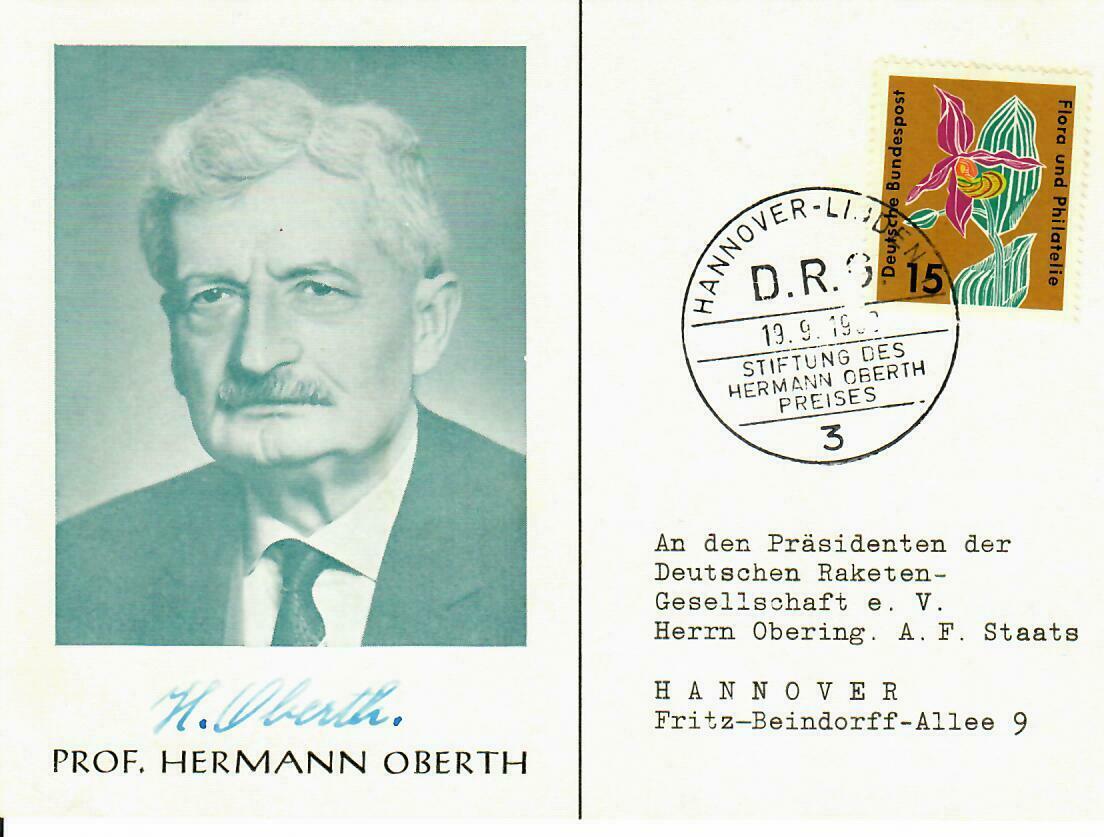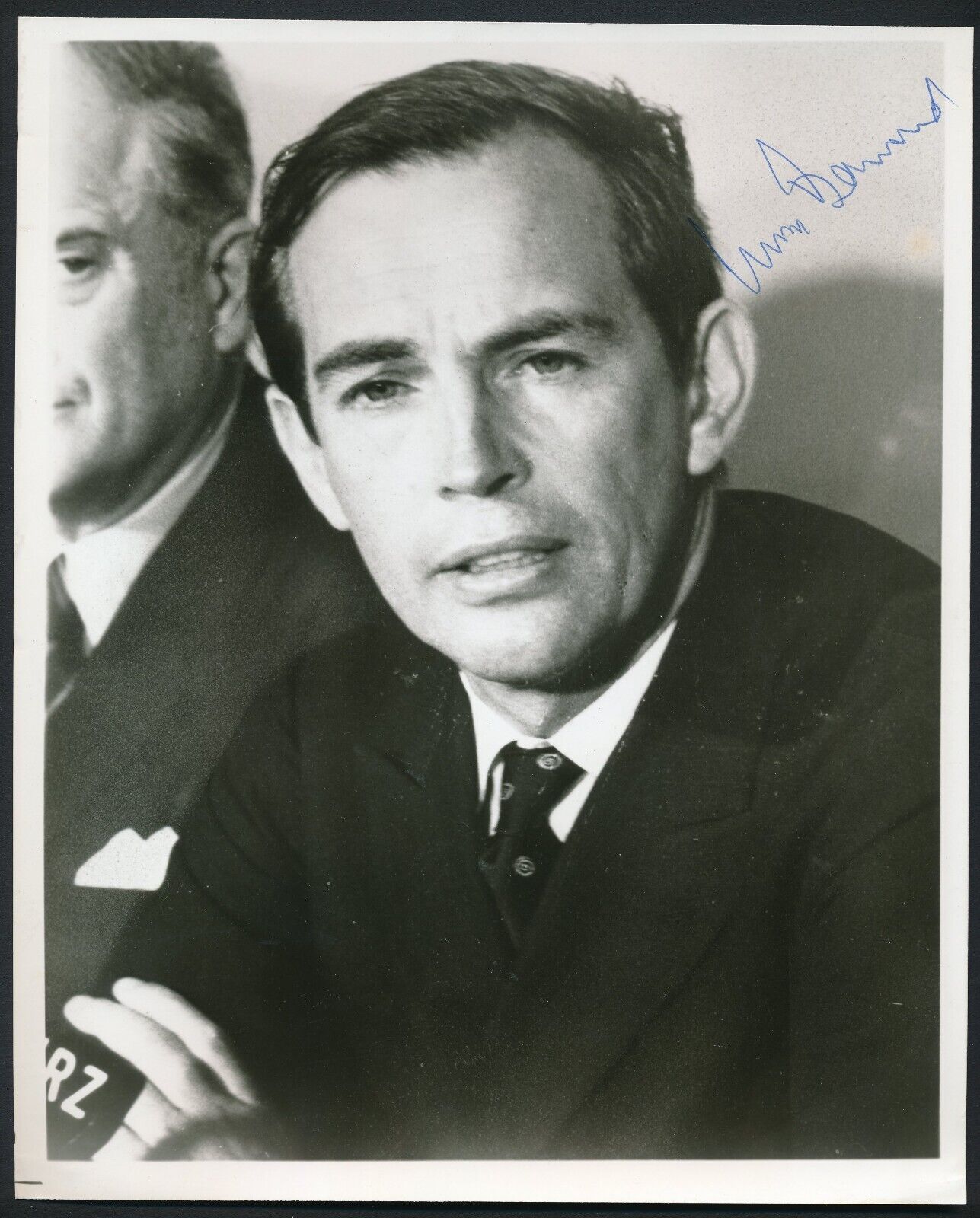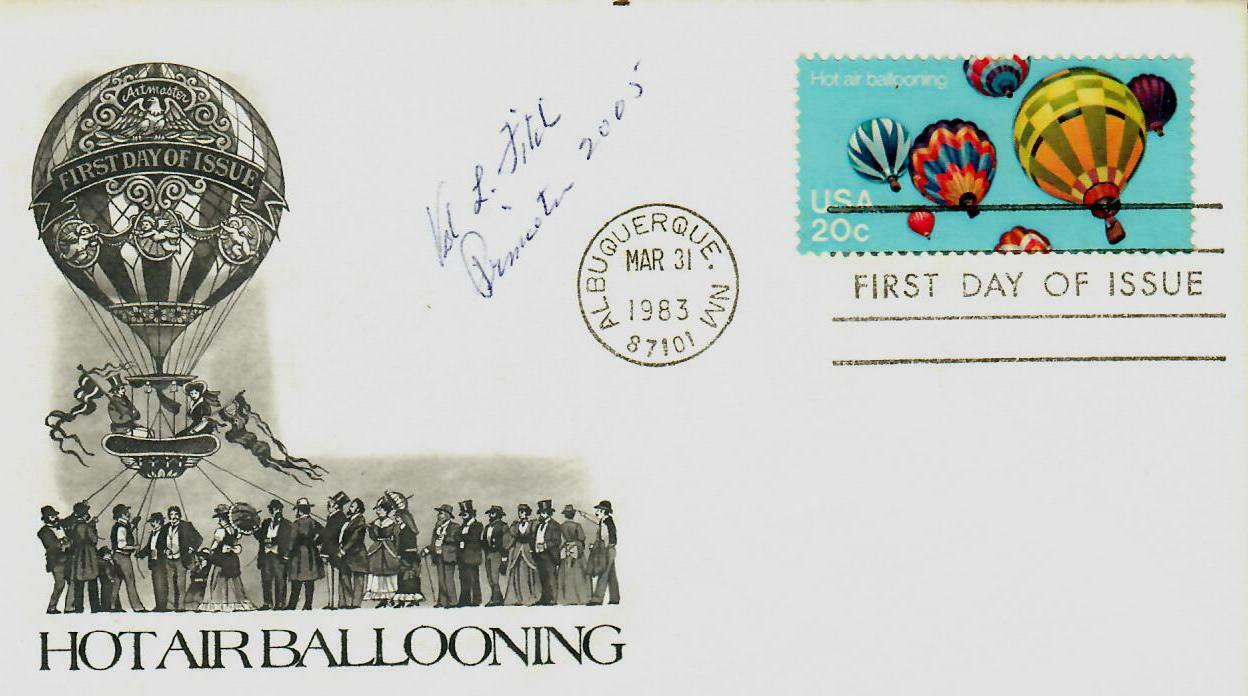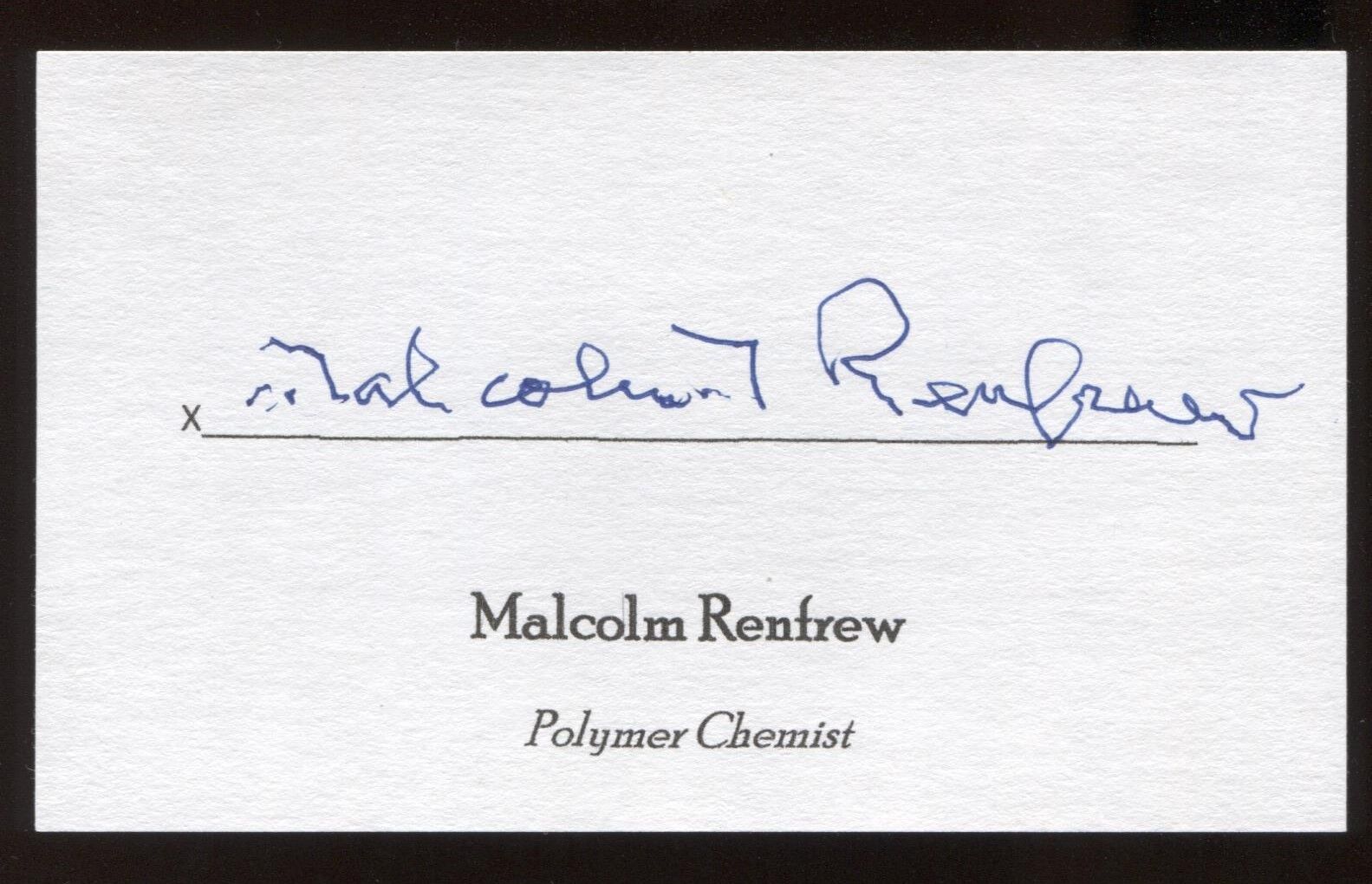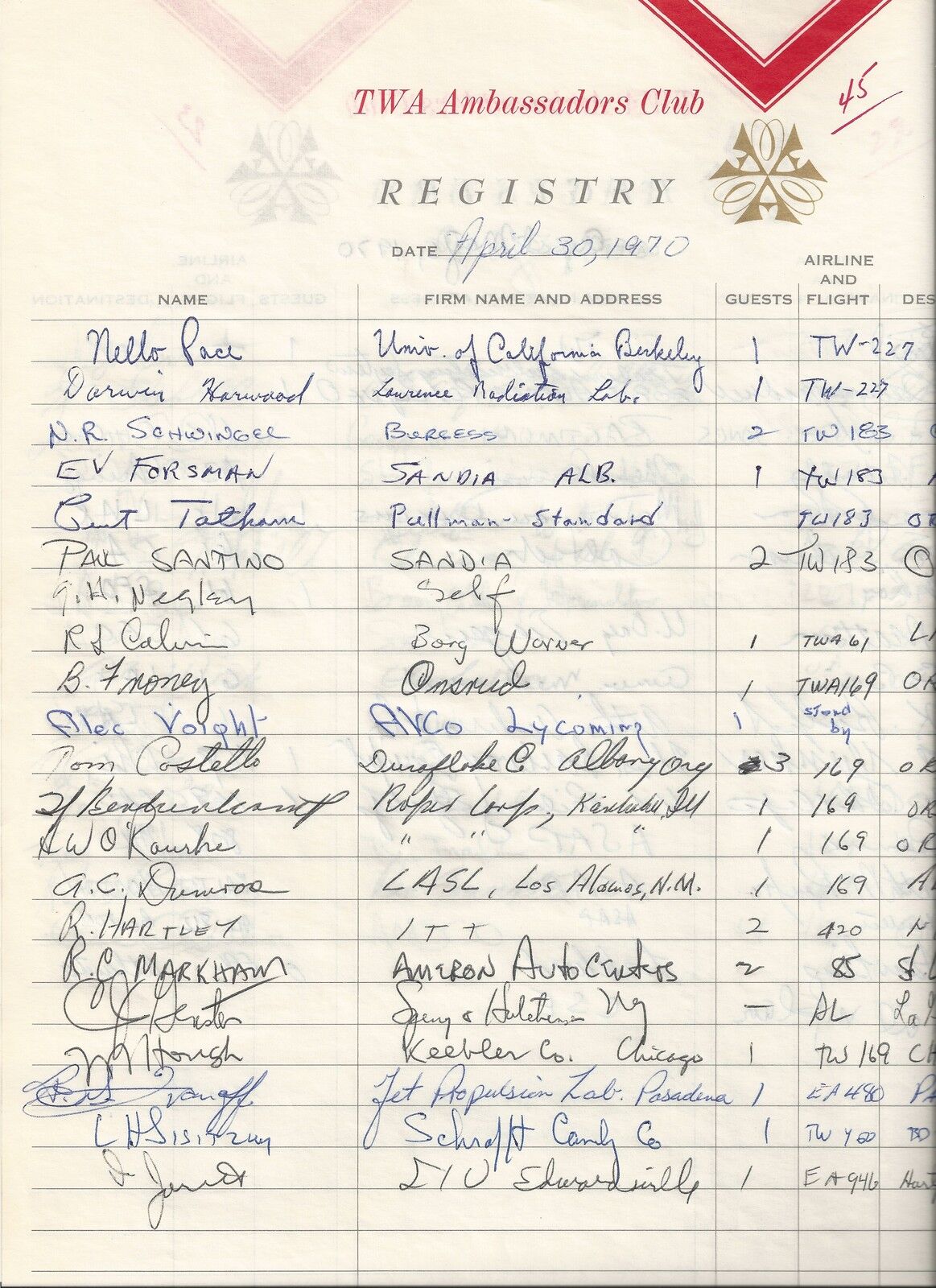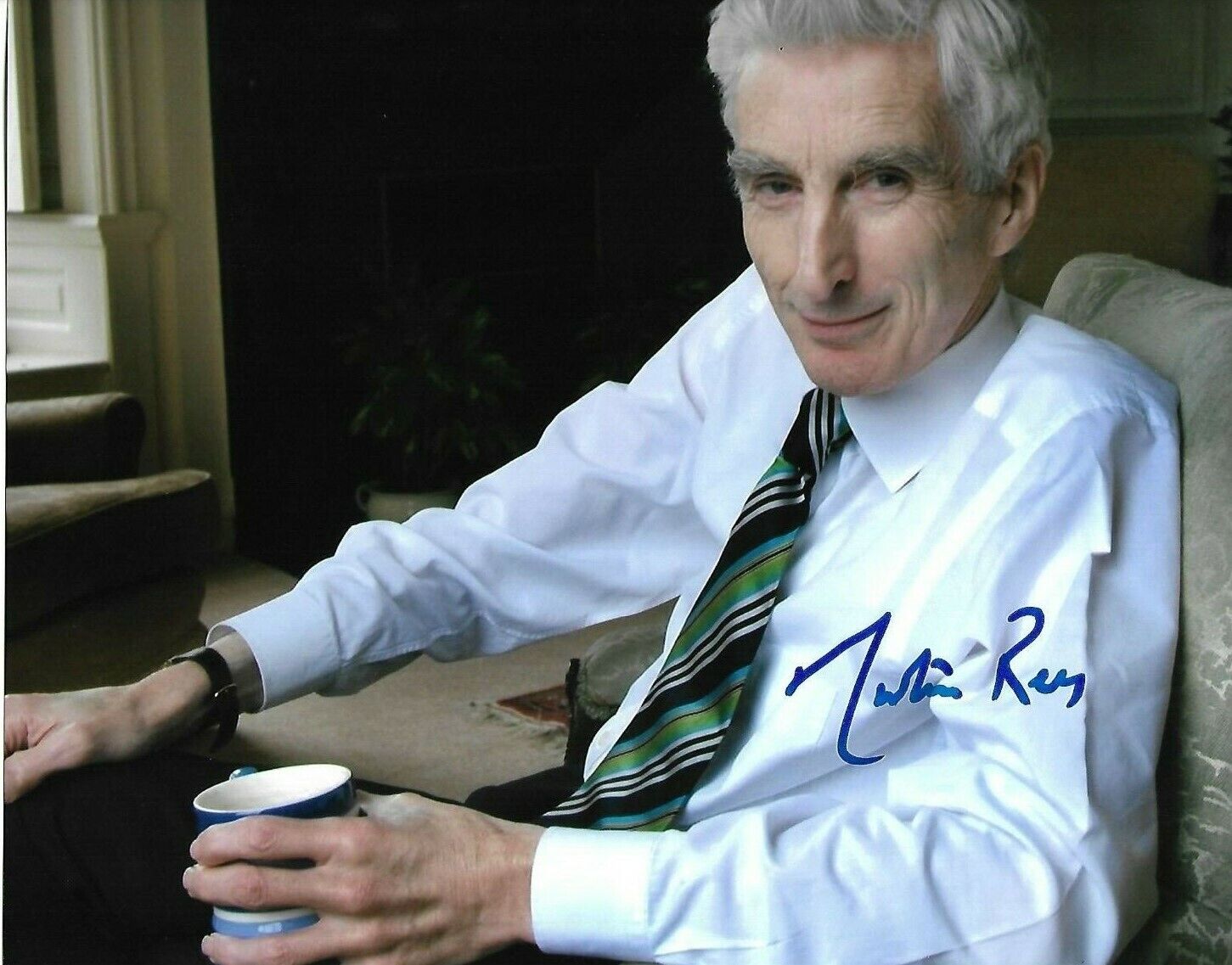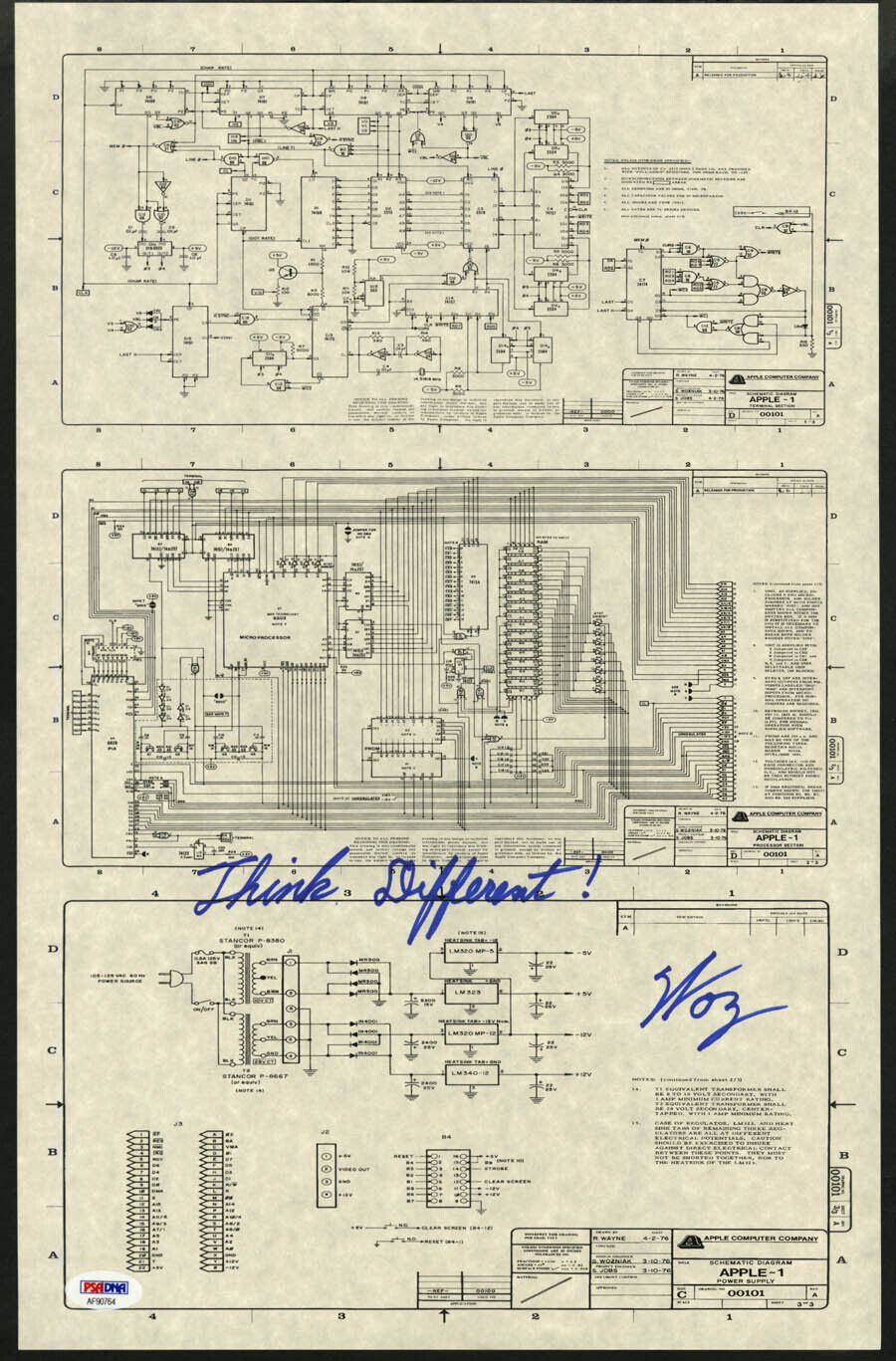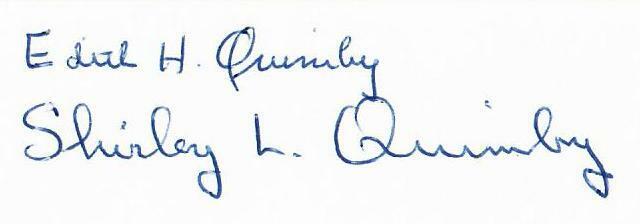-40%
"Founding Father of Rocketry" Hermann Oberth Signed Postcard Todd Mueller COA
$ 68.63
- Description
- Size Guide
Description
Up for auction the"Founding Father of Rocketry" Hermann Oberth Hand Signed Postcard.
This item is authenticated By Todd Mueller Autographs and comes with their certificate of authenticity.
ES-7732E
Hermann Julius Oberth (German: [ˈhɛrman ˈjuːli̯ʊs ˈoːbɛrt]; 25 June 1894 – 28 December 1989) was an Austro-Hungarian-born German physicist and engineer. He is considered one of the founding fathers of rocketry and astronautics, along with the French Robert Esnault-Pelterie, the Russian Konstantin Tsiolkovsky, and the American Robert Goddard. set off by the novels of Jules Verne, especially From the Earth to the Moon and Around the Moon. He was fond of reading over them up until they were engraved on his memory. As a result, Oberth constructed his first model rocket as a school student at the age of 14. In his youthful experiments, he arrived independently at the concept of the multistage rocket. However, during this time, he lacked the resources to put his ideas into practice. In 1912, Oberth began the study of medicine in Munich, Germany, but at the outbreak of World War I, he was drafted into the Imperial German Army, assigned to an infantry battalion, and sent to the Eastern Front against Russia. In 1915, Oberth was moved into a medical unit at a hospital in Segesvár (German Schäßburg, Romanian Sighișoara), Transylvania, in Austria-Hungary (today Romania).[8] There he found the spare time to conduct a series of experiments concerning weightlessness, and later resumed his rocketry designs. By 1917, he showed designs of a missile using liquid propellant with a range of 290 km to Hermann von Stein, the Prussian Minister of War. On 6 July 1918, Oberth married Mathilde Hummel, with whom he had four children. Among these were a son who died as a soldier in World War II, and a daughter who also died during the war when there was an accidental explosion at a liquid oxygen plant where she was in August 1944. In 1919, Oberth once again moved to Germany, this time to study physics, initially in Munich and later at the University of Göttingen. In 1922, Oberth's proposed doctoral dissertation on rocket science was rejected as "utopian". However, professor Augustin Maior of the University of Cluj, Romania offered Oberth to defend his original dissertation there in order to receive the doctorate degree. He did successfully on 23 May 1923. He next had his 92-page work published privately in June 1923 as the somewhat controversial book, Die Rakete zu den Planetenräumen ("The Rocket into Planetary Space"). By 1929, Oberth had expanded this work to a 429-page book titled Wege zur Raumschiffahrt ("Ways to Spaceflight"). Oberth commented later that he made the deliberate choice not to write another doctoral dissertation. He wrote, "I refrained from writing another one, thinking to myself: Never mind, I will prove that I am able to become a greater scientist than some of you, even without the title of Doctor." Oberth criticized the German system of education, saying "Our educational system is like an automobile which has strong rear lights, brightly illuminating the past. But looking forward, things are barely discernible." Oberth became a member of the Verein für Raumschiffahrt (VfR) – the "Spaceflight Society" – an amateur rocketry group that had taken great inspiration from his book, and Oberth acted as something of a mentor to the enthusiasts who joined the Society. Oberth lacked the opportunities to work or to teach at the college or university level, as did many well-educated experts in the physical sciences and engineering in the time period of the 1920s through the 1930s – with the situation becoming much worse during the worldwide Great Depression that started in 1929. Therefore, from 1924 through 1938, Oberth supported himself and his family by teaching physics and mathematics at the Stephan Ludwig Roth High School in Mediaș, Romania. In parts of 1928 and 1929, Oberth also worked in Berlin as a scientific consultant on the film, Frau im Mond ("The Woman in the Moon"), which was directed and produced by the great film pioneer Fritz Lang at the Universum Film AG company. This film was of enormous value in popularizing the ideas of rocketry and space exploration. One of Oberth's main assignments was to build and launch a rocket as a publicity event just before the film's premiere. He also designed the model of the Friede, the main rocket portrayed in the film.On 5 June 1929, Oberth won the first (Robert Esnault-Pelterie - André-Louis Hirsch) Prix REP-Hirsch of the French Astronomical Society for the encouragement of astronautics in his book Wege zur Raumschiffahrt ("Ways to Spaceflight") that had expanded Die Rakete zu den Planetenräumen to a full-length book. The book is dedicated to Fritz Lang and Thea von Harbou. In the autumn of 1929, Oberth conducted a static firing of his first liquid-fueled rocket motor, which he named the Kegeldüse. The engine was built by Klaus Riedel in a workshop space provided by the Reich Institution of Chemical Technology, and although it lacked a cooling system, it did run briefly. He was helped in this experiment by an 18-year-old student Wernher von Braun, who would later become a giant in both German and American rocket engineering from the 1940s onward, culminating with the gigantic Saturn V rockets that made it possible for man to land on the Moon in 1969 and in several following years. Indeed, Von Braun said of him: Hermann Oberth was the first, who when thinking about the possibility of spaceships grabbed a slide-rule and presented mathematically analyzed concepts and designs.... I, myself, owe to him not only the guiding-star of my life, but also my first contact with the theoretical and practical aspects of rocketry and space travel. A place of honor should be reserved in the history of science and technology for his ground-breaking contributions in the field of astronautics. In 1938, the Oberth family left Sibiu, Romania, for good, to first settle in Austria, then in Nazi Germany, then in the United States, and finally back to a democratic West Germany. Oberth himself moved on first to the Technische Hochschule in Vienna, Austria, then to the Technische Hochschule in Dresden, Germany. (A Technische Hochschule at that time was a technical college offering advanced professional training in selected fields, rather than an institution also engaged in basic research as a university.) Oberth moved to Peenemünde, Germany, in 1941 to work on the Aggregat rocket program. Around September 1943, he was awarded the Kriegsverdienstkreuz I Klasse mit Schwertern (War Merit Cross 1st Class, with Swords) for his "outstanding, courageous behavior ... during the attack" on Peenemünde by Operation Hydra, part of Operation Crossbow. Later he worked on solid-propellant anti-aircraft rockets at the German WASAG military organization near Wittenberg. Around the end of World War II in Europe, the Oberth family moved to the town of Feucht, near the regional capital of Nuremberg, which became part of the American Zone of occupied Germany, and also the location of the high-level war-crimes trials of the surviving Nazi leaders. Oberth was allowed to leave Nuremberg to move to Switzerland in 1948, where he worked as an independent consultant and a writer. In 1950, Oberth moved on to Italy, where he completed some of the work that he had begun at the WASAG organization for the new Italian Navy. In 1953, Oberth returned to Feucht, Germany, to publish his book Menschen im Weltraum (Mankind into Space), in which he described his ideas for space-based reflecting telescopes, space stations, electric-powered spaceships, and space suits. During the 1950s and 1960s, Oberth offered his opinions regarding unidentified flying objects (UFOs). He was a supporter of the extraterrestrial hypothesis for the origin of the UFOs that were seen from Earth. For example, in an article in The American Weekly magazine of 24 October 1954, Oberth stated, "It is my thesis that flying saucers are real, and that they are space ships from another solar system. I think that they possibly are manned by intelligent observers who are members of a race that may have been investigating our earth for centuries..." He also wrote an article in the second edition of Flying Saucer Review titled "They Come From Outer Space". He discussed the history of reports of "strange luminous objects" in the sky, mentioning that the earliest historical case is of "Shining Shields" reported by Pliny the Elder. He wrote, "Having weighed all the pros and cons, I find the explanation of flying discs from outer space the most likely one. I call this the "Uraniden" hypothesis, because from our viewpoint the hypothetical beings appear to come from the sky (Greek – 'Uranos')." Oberth eventually came to work for his former student, Wernher von Braun, who was developing space rockets for NASA in Huntsville, Alabama. (See also List of German rocket scientists in the United States.) Among other things, Oberth was involved in writing the study, The Development of Space Technology in the Next Ten Years. In 1958, Oberth was back in Feucht, Germany, where he published his ideas on a lunar exploration vehicle, a "lunar catapult", and on "muffled" helicopters and airplanes. In 1960, back in the United States again, Oberth went to work for the Convair Corporation as a technical consultant on the Atlas rocket program.
